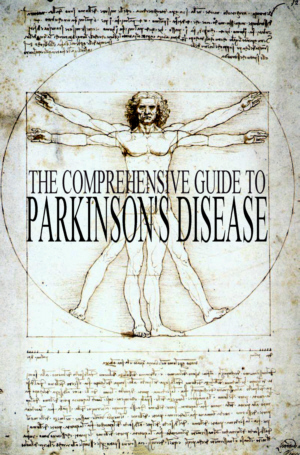.gif) VIARTIS � |
|||
|
� � � � |
DIAGNOSIS OF PARKINSON'S DISEASE |
� � � � � � � � � � � � � � � |
|
|
|||
|
Diagnosis is usually based on physical observation and questioning of the patients, but can sometimes involve scanning methods. The SPECT scan and the PET scan are the most accurate means of diagnosis. The following is a summary of the main means of diagnosing and assessing Parkinson's Disease : � SYMPTOM QUESTIONNAIRES � UNIFIED PARKINSONS DISEASE RATING SCALE The most commonly used symptom questionnaire is the Unified Parkinson Disease Rating Scale (UPDRS). The UPDRS was developed to address the need for a comprehensive Parkinson's Disease measurement tool. It encompasses earlier rating scales : Hoehn and Yahr staging scale, and the modified Schwab and England activities of daily living scale. In monotherapy, a �Total UPDRS� score is the combined sum of parts I, II, and III: 0 (not affected) to 176 (most severely affected). In adjunct therapy, part IV is included. Part IV contains 11 questions and the scale can range from 0 to 23. For an understanding of the UPDRS go to UPDRS.�������������������������������������������������������������������������������������������������������������������������������������������������������������������������������������������� HOEHN AND YAHR The Hoen and Yahr characterises patients according to a scale of five stages of severity, from Stage 1, which is mild, to Stage 5, which is incapacitated. For the questionnaire go to the Hoehn and Yahr scale. ����������������������������������������������������������������������������������������������������������������������������������������������������������������������������������������������� SCHWAB AND ENGLAND The Schwab and England Activities of Daily Living assesses patients in terms of their degree of independence concerning their functions - with a range a percentages from 100% to 0%. Rating can be assigned by the rater or the patient. For the questionnaire go to the Schwab and England.���������������������������������������������������������������������������������������������������������������������������������������������������������������������������������������������� PDQ39 The PDQ39 assesses the quality of life. The PDQ-39 is the most widely used Parkinson's Disease specific measure of health status. It contains thirty nine questions, covering eight aspects of quality of life. Scores on the PDQ range from 0 to 100, with higher scores reflecting greater problems. For the questionnaire go to PDQ 39. ���������������������������������������������������������������������������������������������������������������������������������������������������������������������������������������������� PDQL The PDQL is a self administered measure that contains 37 items contained in four sub-scales : parkinsonian symptoms, systemic symptoms, social functioning. An overall scale can be derived, with a higher score indicating better perceived quality of life. For the questionnaire go to the PDQL. � PHYSICAL METHODS � SPECT SCAN A SPECT scan is a type of nuclear imaging test, which means it uses a radioactive substance and a special camera to create three-dimensional images that show how your organs work.
� PET SCAN The F-dopa PET scan is an accurate aid in diagnosing Parkinson's Disease as it can show decreased dopamine activity in the basal ganglia.
�������������������������������������������������������������������������������������������������������� SMELL TESTS The SIT, which is also known as UPSIT, consists of four self-administered test booklets, each containing ten stimuli for smell.
������� TRANSCRANIAL SONOGRAPHY Transcranial Sonography is a non-invasive, diagnostic technique that makes use of sound waves to create a digital image.
��������������������������������������������������������������������������������������������������������������������������������������������������������� EYEBRAIN TRACKER The eye-tracking system, the Mobile Eye Brain Tracker (EBT), is available for the detection of Parkinson-plus diseases.
� PARKINSON'S KINETIGRAPH The Parkinson�s KinetiGraph system consists of a sensor that is worn around the wrist of the patient to record data about their symptoms.
� WEARABLE SENSOR Mercury is a wearable wireless sensor being developed as a means of enabling home monitoring of the motion of people with Parkinson's Disease.
� �
� |
|||
|
���
|
|||
.gif) |
|||
| � | |||
| �2006-2018 Viartis | |||
| � | |||
| [email protected] | |||
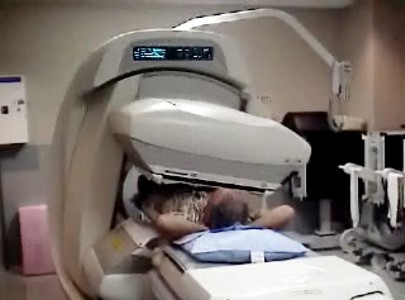 SPECT
SPECT
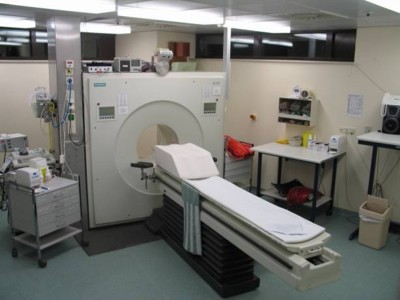 Positron emission tomography (PET) is a nuclear medicine imaging technique
which produces a three-dimensional image or map
of functional processes in the body. It will take
approximately 30 to 60 minutes for radiotracer to travel through your body
and to be absorbed by the tissue being studied. You will then be moved into the PET
scanner and the imaging will begin.� Actual scanning time is approximately 45 minutes. Images of tracer
concentration in 3-dimensional space within the body are then reconstructed by
computer analysis.� For more information go to
Positron emission tomography (PET) is a nuclear medicine imaging technique
which produces a three-dimensional image or map
of functional processes in the body. It will take
approximately 30 to 60 minutes for radiotracer to travel through your body
and to be absorbed by the tissue being studied. You will then be moved into the PET
scanner and the imaging will begin.� Actual scanning time is approximately 45 minutes. Images of tracer
concentration in 3-dimensional space within the body are then reconstructed by
computer analysis.� For more information go to 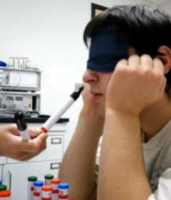 Loss of olfactory function (sense of smell) is
common in Parkinson's Disease, and so is sometimes used as a means of diagnosis.
Respondents pick from one of four
multiple choices. For more information go to
Loss of olfactory function (sense of smell) is
common in Parkinson's Disease, and so is sometimes used as a means of diagnosis.
Respondents pick from one of four
multiple choices. For more information go to
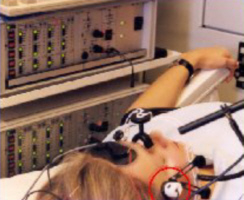 Sound waves are produced by a transducer. Strong, short electrical
pulses from the ultrasound machine make the transducer ring at the desired
frequency. Materials on the face of the transducer enable the sound to be
transmitted into the body. The sound wave is partially reflected
from layers between different tissues. The return sound wave vibrates the
transducer, which turns the vibrations into electrical pulses. The electrical
pulses then travel to the
scanner where they are then transformed into a digital image.
Sound waves are produced by a transducer. Strong, short electrical
pulses from the ultrasound machine make the transducer ring at the desired
frequency. Materials on the face of the transducer enable the sound to be
transmitted into the body. The sound wave is partially reflected
from layers between different tissues. The return sound wave vibrates the
transducer, which turns the vibrations into electrical pulses. The electrical
pulses then travel to the
scanner where they are then transformed into a digital image. 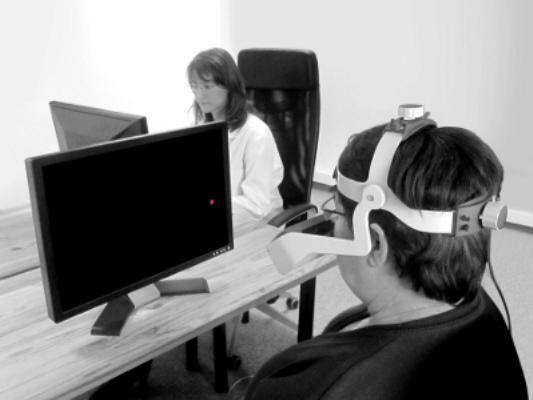 Parkinson-plus syndromes have additional features that
distinguish them from Parkinson's Disease.
Parkinson-plus syndromes have additional features that
distinguish them from Parkinson's Disease.
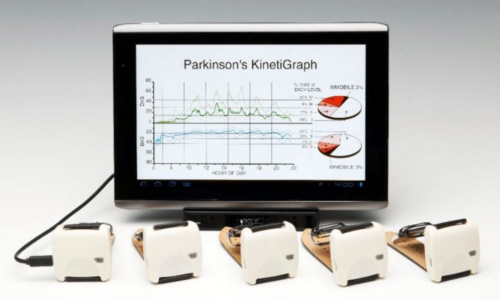 The
system also uses
The
system also uses
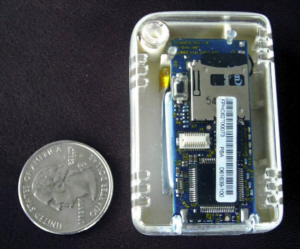 Patients wear
wireless nodes equipped with sensors for monitoring their movement and
physiological conditions. The basic approach is to capture data from each limb
using wearable sensors. The patient wears up to eight sensors and recharges the
sensors at night. A laptop in the patient's home stores the data. Data is then
sent via the Internet to the clinic where it is processed. Signals are subject to
extensive processing to evaluate the patient�s motor function.
Patients wear
wireless nodes equipped with sensors for monitoring their movement and
physiological conditions. The basic approach is to capture data from each limb
using wearable sensors. The patient wears up to eight sensors and recharges the
sensors at night. A laptop in the patient's home stores the data. Data is then
sent via the Internet to the clinic where it is processed. Signals are subject to
extensive processing to evaluate the patient�s motor function.